
Photo: Owen Buggy
With more and more natural reefs dying due to climate change, people are increasingly turning to artificial reefs to provide safe ecosystems for aquatic life. And while we’ve seen everything from subway cars to underwater sculptures used for this purpose, nothing is quite as evocative as the BVI Art Reef.
Structured to promote the growth of transplanted coral, the artificial reef is composed of a WWII fuel barge topped by an elaborate 80-foot mesh kraken. Named the Kodiak Queen, the BVI Art Reef is also open to divers, as well as marine scientists and local students from the British Virgin Islands. The ship, which is one of five that fought at Pearl Habor, was set to be scrapped before photographer Owen Buggy discovered its historical significance and brought this unique idea to Sir Richard Branson, who lives on Necker Island in the British Virgin Islands.
After years of careful research and planning to transform the warship into a place that would attract divers and also cultivate a healthy ecosystem, the Kodiak Queen was sunk into the Caribbean Sea in April 2017. BVI Art Reef united Branson’s nonprofit Unite B.V.I., artist group Secret Samurai Productions, social justice entrepreneurial group Maverick1000, and ocean education nonprofit Beneath the Waves, in the hopes of raising awareness about environmental issues facing the ocean and inspiring people to come up with positive solutions for change.
The entire reef works in harmony with the existing ecosystem, with the sculptural kraken fostering coral growth that will help feed and house local species, such as the over-fished Goliath Grouper. Images from a July dive by photographer Michael Shronk already show signs of life on the reef, as coral grows on the mesh and local fish swim in and out of the giant tentacles.
“The BVI Art Reef gives us a unique platform to capture people’s attention on the importance of addressing ocean conservation and in particular, combat climate change, protect our coral reefs, and rehabilitate vulnerable marine species,” shares Branson. “This is an incredible opportunity to create one of the most meaningful dive sites in the world.”
In the British Virgin Islands, a World War II ship—topped with an 80-foot mesh kraken—has been sunk in the Caribbean Sea, creating an artificial reef.
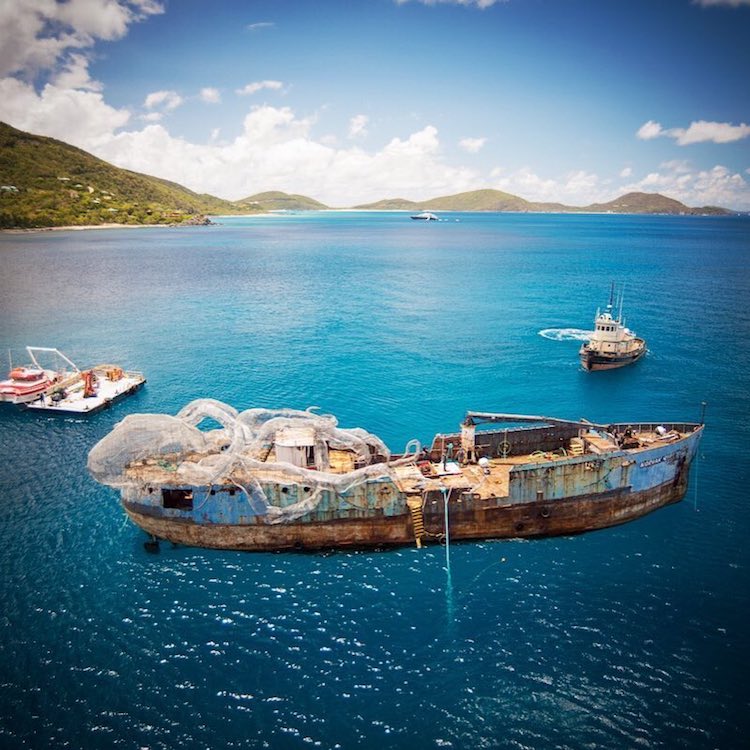
Photo: Owen Buggy
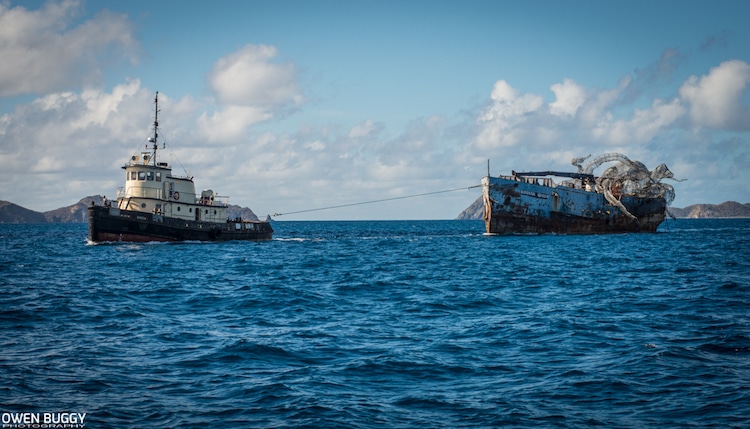
Photo: Owen Buggy

Photo: Owen Buggy
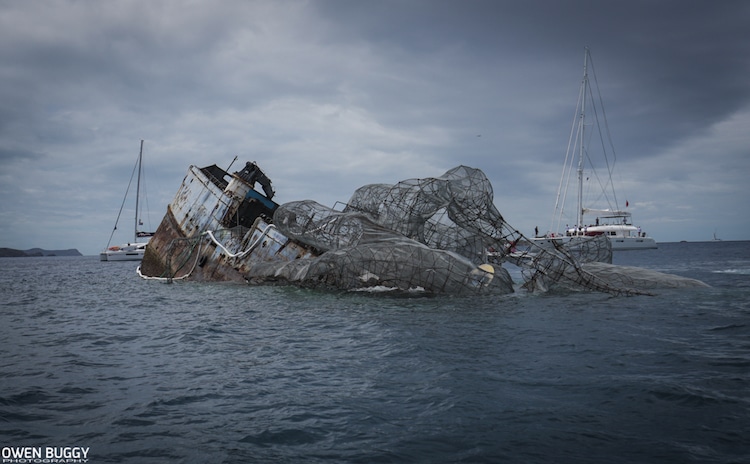
Photo: Owen Buggy
A large team worked tirelessly to perfect the final form of the BVI Art Reef, where the mesh sculpture will allow for coral growth.
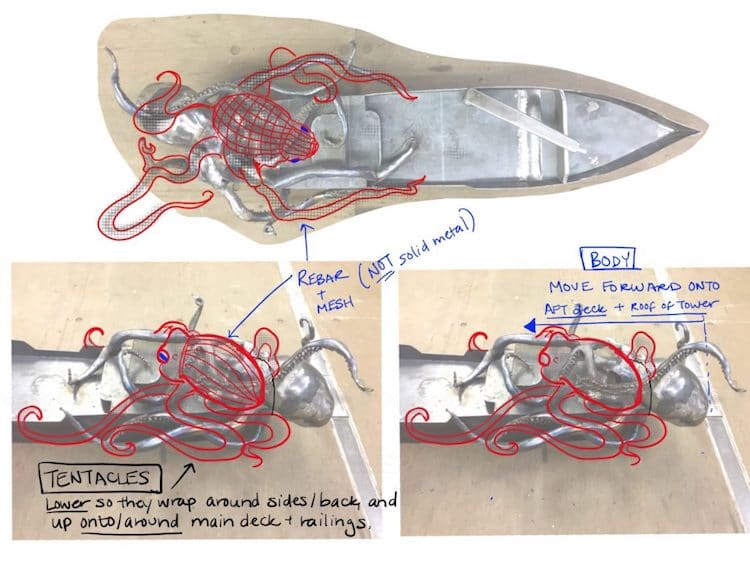
Photo: BVI Art Reef
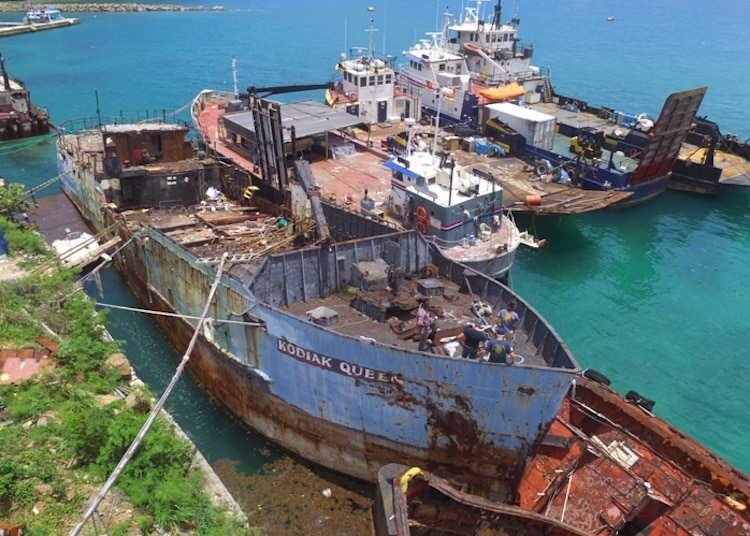
Photo: BVI Art Reef
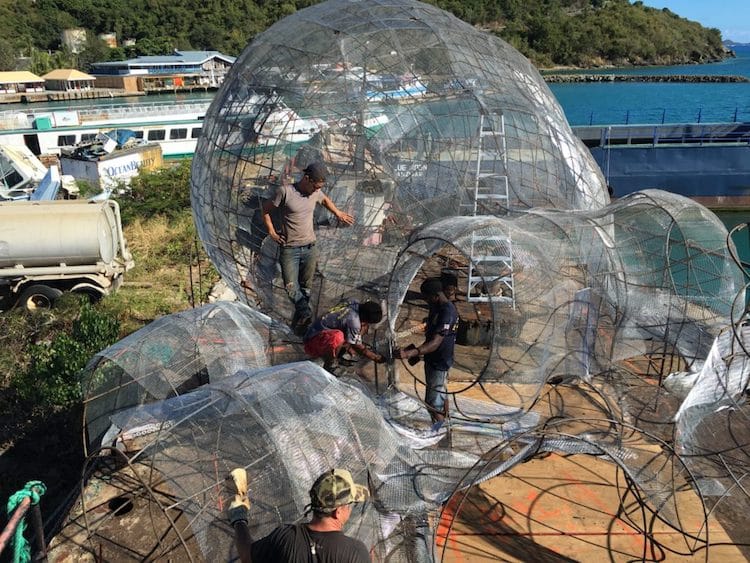
Photo: BVI Art Reef
Aside from marine scientists and local students, the reef is also open to divers—unlocking new ecotourism avenues.
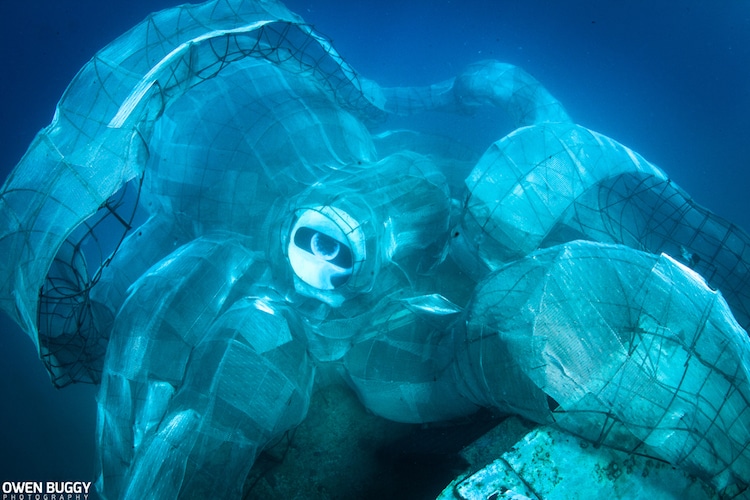
Photo: Owen Buggy
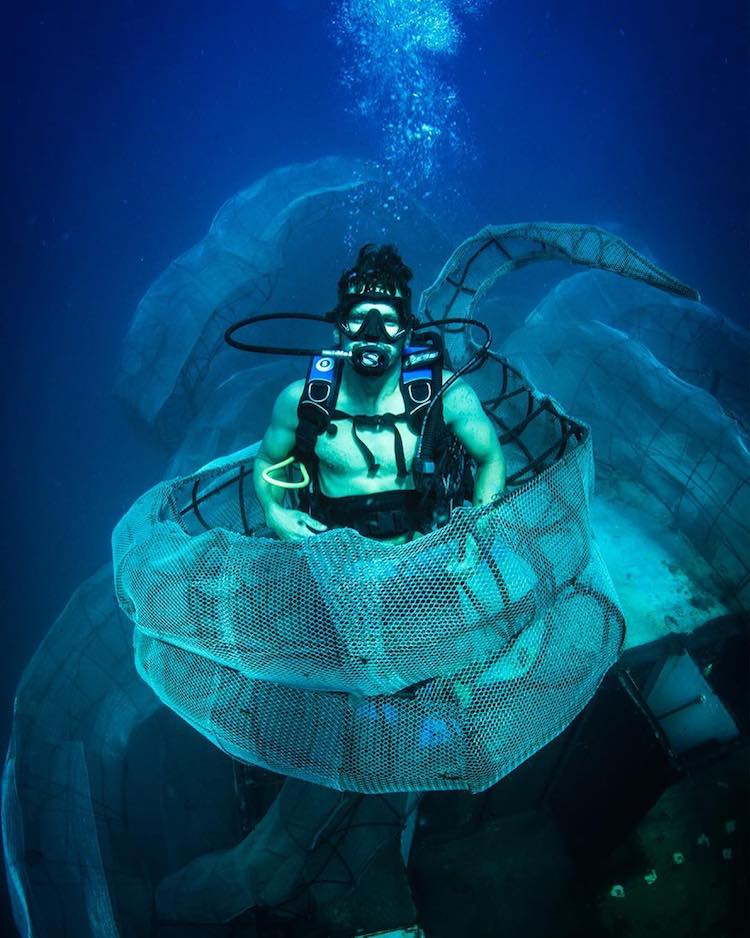
Photo: Owen Buggy
Since it was sunk in April 2017, photographs show life forming within the reef, providing food and shelter for local marine species.
An upcoming documentary will follow the creation of this incredible attempt to save our oceans.
BVI Art Reef: Website | Facebook
h/t: [Colossal]
Related Articles:
Underwater Sculptures Celebrate Life on Earth and Protect Aquatic Ecosystems
Panoramic Exhibit Offers Life-Size Views of Australia’s Great Barrier Reef
Life-Size VW Beetle Becomes a Reef
Malaysia Creates a 1-Million-Hectare Marine Park That Protects Its Delicate Ecosystem
